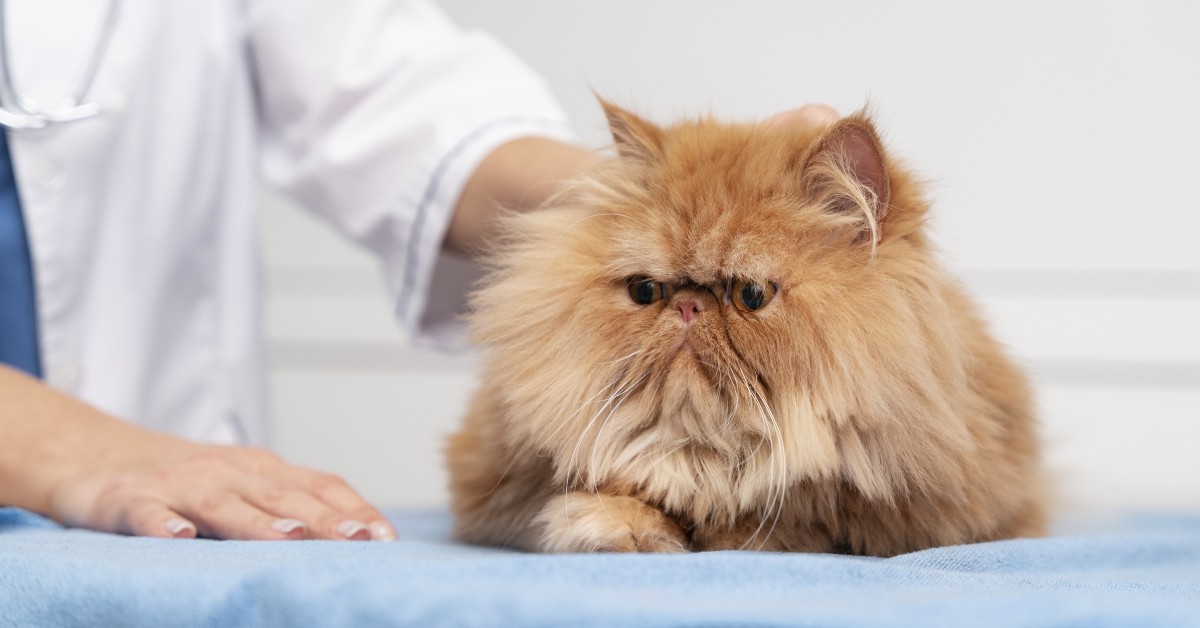Does Your Pet Have a Pre-Existing Condition?
Pre-existing health conditions may prevent some pet owners from getting the pet insurance coverage they need to cover vet services and medications.

Despite our best efforts as pet owners to keep our animals safe and healthy, medical conditions can develop that require veterinarian care. As managing health problems in pets can be costly, many people choose to offset their vet bills with pet insurance. However, things can get tricky when you choose to acquire a policy after your animal’s diagnosis. Before investing in insurance, know what to expect in terms of coverage and what types of pre-existing conditions may not be covered by your pet policy.
What Is a Pre-Existing Condition?
A pre-existing condition refers to any health condition or illness that was present or diagnosed prior to enrolling in a new pet health insurance policy or during the policy’s waiting period. For example, if your pet was diagnosed with cataracts in February and your pet insurance coverage begins in April, the cataracts would be considered a pre-existing condition.
Unfortunately, most pet insurance companies do not cover pets with pre-existing conditions, or provide only limited coverage. However, that doesn’t necessarily mean that you can’t get pet insurance if your cat or dog has an ongoing illness.
Examples of Pre-Existing Conditions in Pets
Like their human companions, pets can develop a wide range of medical conditions. Some are brief and treatable, while others are incurable and must be managed over a lifetime. The type of condition your pet has, and whether or not he’s showing symptoms, can affect whether an insurance company will offer full, limited, or no coverage.
Congenital and Hereditary Conditions
Some of the most common health problems in pets are congenital or hereditary. Genetic conditions are especially common in purebreds and may present at birth or later in life. Examples of common hereditary conditions in pets include allergies, hip dysplasia, cherry eye (entropion), intervertebral disc disease (IVDD), and certain types of cancer. Many companies will cover breeds at risk for congenital or hereditary conditions, as long as the animal has not yet shown signs or been diagnosed before coverage begins.
Bilateral Conditions
A bilateral health condition is one that occurs on both sides of the body. For example, hip dysplasia is considered a bilateral condition as it can affect both the right and left hip. Similar to congenital and hereditary conditions, most insurance companies will not cover bilateral conditions that were diagnosed before the coverage date. Some other examples of bilateral conditions include cataracts, glaucoma, and patellar luxation.
Curable and Incurable Conditions
When it comes to other health conditions, the insurer will typically consider whether the problem is curable or incurable. A curable condition is one that your pet has been treated for and ultimately cured of. However, some insurance companies require pets to be free of symptoms for up to 180 days for the condition to be considered cured. Examples of curable health problems include urinary tract infections and ear infections.
An incurable condition, on the other hand, is one that cannot be cured and instead must be managed. Most pet insurance companies do not cover incurable health conditions that were diagnosed before enrollment or doing a policy’s waiting period. Examples of incurable pre-existing conditions in pets include allergies, arthritis, hip dysplasia, diabetes, disc disease, urinary blockages, and many types of heart disease and cancers.
Importance of Getting Pet Insurance Early
While you never expect your pet to develop a lasting health condition, no animal is impervious to health problems. That is why the best time to get health insurance for your pet is at a young age when pre-existing conditions are far less common. The longer you wait to insure your pet, the higher the risk a health problem could develop that will prevent you from getting the coverage you need to cover your pet’s vet bills.
If your pet already has an existing health condition, getting a policy may still be possible. Pet insurance companies use several strategies to evaluate pre-existing conditions. First, the insurer will generally require you to submit health documentation or undergo a veterinary exam. Many insurers also have strict waiting periods, which can delay coverage by several weeks or months.
It’s also important to know that pre-existing health exclusions often vary based on the animal’s age. For example, an insurer may exclude coverage for cataracts in older dogs but may provide full or partial coverage for dogs under the age of three. Oftentimes, older pets have more limited coverage options compared to younger pets, who tend to have better overall health. This is why it’s important to get a health policy early on for your pet.
Keeping Your Pet Healthy and Cared for
It can be stressful to find out that your pet has developed a health condition, especially if you don’t have the finances to keep up with vet bills. While pet insurance is available, many pet owners encounter barriers when trying to get coverage due to pre-existing conditions. Keeping your pet well-fed and active can help ward off health problems now and in the future. Consult with your veterinarian about how to best care for your pet and manage any conditions they may develop over their life.
Ready to start saving money on pet wellness care?
Then take a look at Mint Wellness, the pet wellness plan that provides fast reimbursement on routine pet care. Save on vaccinations, wellness exams, preventatives, dental, and more!
Learn More


